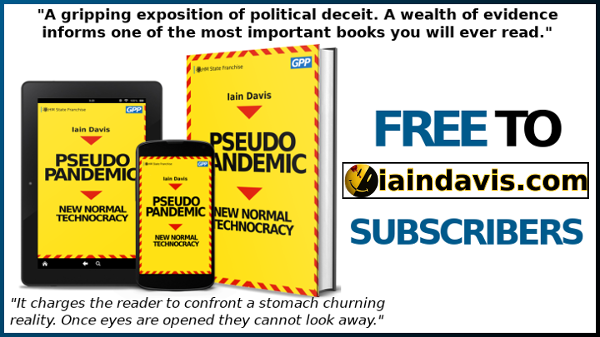The BBC’s “Unvaccinated”: The Pandemic Dataset – Part 3
Iain Davis
In Part 1 we looked at the propaganda and manipulation techniques used throughout the BBC programme “Unvaccinated with Professor Hannah Fry.”
In Part 2 we considered the undisclosed conflicts of interest that apparently led some of the BBC’s chosen “experts” to make some misleading statements.
Yet perhaps the greatest single deception of all was in the BBC press release announcing the programme, which read:
Professor Hannah Fry is a British Mathematician who worked on the data that helped bring the UK out of its first lockdown.
This was incredibly disingenuous of the BBC. On the contrary, Prof. Fry worked on the data that helped put the UK into lockdown.
She was a major contributor to what became known globally as the BBC Pandemic Dataset, which, as we shall see, was central to creating of the myth of a pandemic—central, that is, to creating a pseudopandemic.
The Pseudopandemic
Absent the perception of a pandemic, there could have been no possible justification to advocate for a universal vaccination campaign. Yet, from the start, many scientists pointed out that there was little-to-no evidence to substantiate the WHO’s declaration of a “global pandemic.”
There was virtually no asymptomatic transmission; there was no proof that children were at risk or presented an infection risk; in the UK, the average age of mortality “with” COVID-19 was 82, at a time when the average age of mortality from life (all cause) was 81 for men and 83 for women.
Such evidence was ignored by the BBC and Prof. Fry, who maintained that the “global pandemic” necessitated mass vaccination.
People in the UK widely believed that the pseudopandemic was real, not because the scientific or statistical evidence was clear but because the government spent billions with PR firms to run “hard-hitting” media campaigns designed to convince them of it.
This intense propaganda, combined with the censoring or deplatforming of any scientist or expert who questioned the COVID-19 narrative and/or the COVID vaccine narrative, ensured that the general public never learned the real, relevant facts about either the disease or the jab.
The vast majority who believed the pandemic was real were willing to accept a government policy response that, prior to the vaccine rollout, was based upon non-pharmaceutical interventions (NPIs). Lockdowns, social distancing, mask-wearing and track and trace are all examples of NPIs.
Even if the pseudopandemic were not pseudo but a genuine pandemic—which it wasn’t—the NPIs deployed by the UK government would have been justified only in the most extreme circumstances.
In 2019, the WHO published a piece titled “Non-pharmaceutical public health measures for mitigating the risk and impact of epidemic and pandemic influenza.”
In it, the WHO concluded that lockdowns—the “quarantining of healthy individuals”—were “not recommended because there is no obvious rationale for this measure.”
The WHO also advised that social isolation for the sick should be done only for a limited period of time. It did not recommended isolation for “individuals who need to seek medical attention.” It ruled out work closures because of their destructive impact on the economy. The WHO advised shutting down business activity only in “extraordinarily severe pandemics.”
The WHO found “no obvious rationale” for contact tracing—test and trace. It did not recommend the widespread use of face masks, for “there [was] no evidence that this is effective in reducing transmission.”
The prevailing epidemiological understanding was that lockdowns and other NPIs were largely counterproductive. Yet, in defiance of the WHO’s statements and rationale, governments around the world willfully pushed these NPI measures on their citizens just a few months later.
It would not be long before the so-called science emerged to back up these policy decisions. One of the first was reported by Flaxman et al in 2020. It was funded, not surprisingly, by the Bill and Melinda Gates Foundation (BMGF) and the US government. Based on “pandemic models” produced by Imperial College London (ICL), the Flaxman et al. paper suggested that, suddenly, lockdowns reduced the rate of infection by 82%.
When a team of German researchers tried to replicate the paper’s results, they found that the published conclusions were mainly based on assumptions and circular reasoning. The German adademics said:
Purported effects are pure artefacts, which contradict the data. Moreover, we demonstrate that the United Kingdom’s lockdown was both superfluous and ineffective.
Researchers from Stanford University said the Flaxman paper was “highly misleading” and suffered from “serious selective reporting, providing the most favorable estimates for lockdown benefits.” Turning their attention to the ICL models, the team of epidemiologists at Stanford concluded:
Lockdown appeared the most effective measure to save lives in the original analysis of 11 European countries performed by the Imperial College team[.] [. . .] These impacts were highly exaggerated[.][. . .] Claimed effects of lockdown are grossly overstated[.] [. . .] This bias can have devastating implication if it leads to adoption of harmful measures.
Many epidemiologists and other experts were angered by the Flaxman et al. paper. They made it clear that most governments, the UK’s among them, were pursuing NPIs contrary to all epidemiological understanding.
In 2006, Prof. Donald A. Henderson, the person largely credited with winning the fight against smallpox, published Disease Mitigation Measures in the Control of Pandemic Influenza. His refutation of NPIs noted:
There are no historical observations or scientific studies that support the confinement by quarantine of groups of possibly infected people for extended periods. [. . .] Such a policy would also be particularly hard on and dangerous to people living in close quarters, where the risk of infection would be heightened. [. . .] Travel restrictions, such as closing airports and screening travelers at borders, have historically been ineffective [. . .] It might mean closing theaters, restaurants, malls, large stores, and bars[.] [. . .] Implementing such measures would have seriously disruptive consequences[.] [. . .] [A] manageable epidemic could move toward catastrophe.
In the years since Henderson’s 2006 paper, epidemiologists, immunologists, virologists and public health statisticians have not changed their views, as the WHO’s 2019 publication demonstrates. There was no evidence-based reason to change their opinion.
The UK government acknowledged and understood all of this. In its 2011 Influenza Pandemic Preparedness Strategy, the UK Department of Health (its name at the time) did not recommend any of the NPIs that the government subsequently rolled out for COVID-19. No lockdowns, no masks (except in very rare circumstances), no school closures and no travel restrictions were advised.
The Department considered business and economic continuity absolutely essential, for public health reasons as much as any other. Public health officials knew that pointless NPIs would mean “a manageable epidemic could move toward catastrophe.”
As part of that 2011 strategy, the UK government said that vaccine development should be prioritised only “[i]f it is not possible to limit the spread by achieving herd immunity, where so many people are immune that the disease cannot continue to infect people to maintain itself in the population. ”
This is what the science of epidemiology suggests to this day. Nothing has changed.
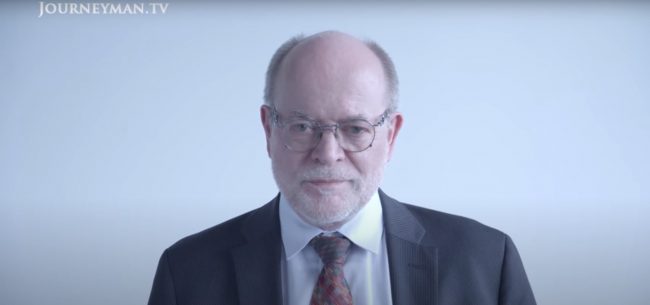
Prof Knut Wittkowski
Prof. Knut M. Wittkowski is one of world’s leading epidemiologists. He developed the science behind—and has coined the term—“reproduction number” (R0). Speaking in April 2020, he said:
With all respiratory diseases, the only thing that stops the disease is herd immunity. About 80% of the people need to have had contact with the virus. [. . .] We are experiencing all sorts of counterproductive consequences of not well-thought-through policy[.] [. . .] [W]e will see more cases among the elderly[.] [. . .] [W]e will see more death because of this social distancing. [. . .] I have been an epidemiologist for 35 years, and I have been modeling epidemics for 35 years [. . .] but it’s a struggle to get heard.
Prof. Wittkowski was censored online and “cancelled” by the MSM for expressing his eminently qualified opinion. The way his voice was suppressed exemplifies how impossible it has been for scientists who question the pseudopandemic to reach the public. Policymakers refused to listen, preferring to hear only from the scientists whose work supported their policies.
Without any apparent explanation, epidemiology was flipped on its head during the pseudopandemic. The resultant NPIs did nothing but deepen the crisis.
The UK government reduced NHS capacity and then told citizens they needed to “stay home to protect the NHS” by “flattening the curve.”
Again, locking down was already known to be both pointless and likely to increase mortality.
Nobel chemist and statistician Prof. Michael Levitt analysed the outbreak of COVID-19 in Wuhan from the beginning. He published his findings and reported that infection rates peaked and then started to decrease in Wuhan in early February 2020.
He demonstrated from this distribution that he could calculate what the infection and death toll would eventually be—regardless of NPIs. His predictions of around 3,250 deaths and 80,000 infections by mid-March were unerringly accurate.
Since the view of Prof. Levitt, like that of many other scientists, contradicted the BMGF-funded alarmism of ICL’s models that were instrumental in providing alleged justification for NPIs, his work was censored and removed from search engine results.
Shortly after the WHO declared the pseudopandemic, then-UK Prime Minister Boris Johnson announced the measures the UK government intended to take in response. Those measures included numerous NPIs.
The only path offered by the UK government out of the social, economic and public health disaster that NPIs created was the so-called vaccines.
According to the official narrative, “vaccines” were the only possible salvation from COVID-19. Whenever potential COVID-19 treatments were found, the WHO and governments around the world ensured that they wouldn’t be adopted. Protecting vaccine development superseded saving lives.
The reality on the ground: the damage supposedly caused by COVID-19 was overwhelmingly the direct result of the policy decision to use NPIs. The “catastrophe” this would cause was already understood and entirely predictable. Catastrophe was actively pursued by the policymakers.
In announcing that it had decided to ignore established epidemiology, the UK government (like many other governments) simultaneously claimed that all of its decisions were “led by science.” However, given that this “science” was actually contrary to the prevailing “science,” we must ask: Where did it come from and who were the scientists pushing it?
At this point, you may be asking still another question: What has any of this got to do with Prof. Fry and BBC programming?
BBC Contagion and the The Haslemere Experiment
“Unvaccinated” is hardly the first questionable “documentary” the BBC has broadcast. In 2018, it produced another called Contagion: The BBC4 Pandemic. The programme chronicled the activities of Prof. Fry as she presented the public face of a BBC data-harvesting operation that began in 2017.
In preparation for “Contagion,” the BBC commissioned the development and rollout of a smartphone app:
The Pandemic app has been created as part of a BBC citizen science event that aims to identify the human networks and behaviours that spread infectious diseases.
The idea was that the GPS location of the app users would be tracked and contact between users recorded. A large database of people’s movements and interactions would be created, enabling mathematicians, statisticians and data modellers to create simulacra of epidemics and pandemics. The BBC added:
[W]e hope the research will benefit everyone in the UK by helping plan for future outbreaks. [. . .] This anonymous information will be stored on secure servers and only accessed by the App developers and the researchers.
An excellent researcher called Pighooey pointed out the key objective of the BBC experiment, as stated in its own “about the app” description:
The data collected between December 2017 and December 2018 will contribute to this new gold-standard set for use in future simulations and in wider Pandemic research.
In other words, the data harvested by the BBC was intended to create simulated, not real, pandemics. This may seem obvious, but it is key to understanding the impact that BBC’s Pandemic Dataset would have. This was not a “model” of a pandemic based upon “real-world” data, but rather a mathematical construct dependent upon assumed epidemiological inputs.
The BBC also said of this app:
The BBC Pandemic App received an Invest Northern Ireland Grant for Research and Development.
Invest Northern Ireland (INI) is a part of the UK government’s Department for the Economy. INI says of itself that its purpose is to “provide strong government support” focused upon “delivering the government’s economic development strategies.”
The BBC went on to say:
The study is funded by the BBC and organised by the London School of Hygiene and Tropical Medicine [LSHTM] and University of Cambridge, in collaboration with app developers Big Motive and programme-makers 360 Production.
The fact that the UK government and the BBC “invested” in the data-gathering project means that the effort was paid for by UK taxpayers and license-fee payers.
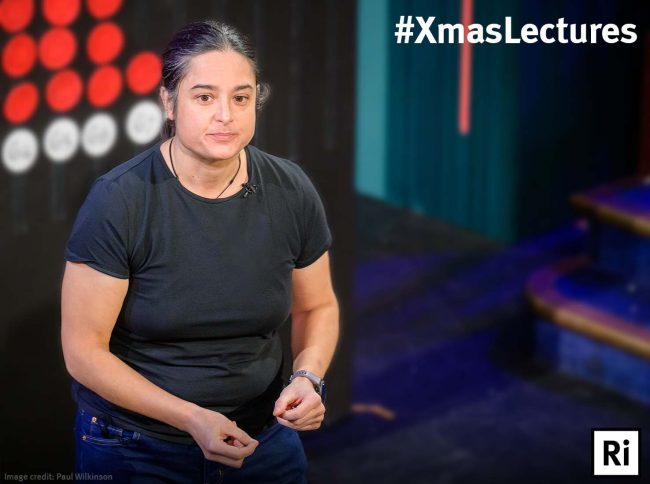
Julia Gog
The experience benefited Big Motive—the BBC’s app developer. Big Motive subsequently produced the UK’s first COVID-19 contact tracing app in Northern Ireland—the StopCOVID NI app.
Similarly, the eventual NHS Test and Trace app for England and Wales was, in part, developed by Zühlke Engineering, whose UK academic partners are Imperial College London (ICL) and the University of Cambridge (UoC).
Again, it seems that UoC’s collaboration with the BBC and the UK government in the “Contagion” experiment proved valuable for Zühlke. As we shall see, the BBC Pandemic Dataset certainly did.
The Surrey town of Haslemere was carefully selected as the epicentre of the simulated outbreak, with Prof. Fry playing the role of “patient zero.” The choice of Haslemere initially led to some consternation among the mathematicians involved in the modelling.
In an article published in the Journal of Epidemics, Prof. Julia Gog said:
In the TV programme we first simulated a detailed outbreak in the town of Haslemere, and this was to be the seed of the national outbreak. [. . .] In particular, we were asked to ensure that the epidemic was seeded in Haslemere. [. . .] It is commonly believed that these epidemic establishment sites are likely to be major population centres. [. . .] While the single introduction in Haslemere may be contrived, there is also no reason to reject the possibility of a major outbreak being introduced in such a town.
Prof. Gog has never disclosed who it was that insisted the BBC’s fake pandemic should be “contrived” to start in the relatively small town of Haslemere. We might suspect that the request came from either the BBC or the government. Both, after all, were paying for the research.
It is almost an incalculable coincidence that the next pandemic in the UK, called COVID-19, supposedly broke out in Haslemere. The first patient in the UK to be treated for COVID-19 was a man who flew in from China. But the first supposed UK infection befell a man who, remarkably, lived in Haslemere.
The BBC reported that he was “from Surrey” yet didn’t think it worth mentioning the town he lived in. The local press, for whom Prof. Fry’s 2018 “Contagion” experiment had been a big deal, did think it interesting. Calling the coincidence “bizarre,” Surrey Live wrote:
The coronavirus outbreak in Haslemere has thrown up a bizarre coincidence to a BBC Four experiment series that was also filmed in the town two years ago. [. . .] The outbreak in the Surrey town has drawn spooky comparisons to the programme ‘Contagion: The BBC Four Pandemic’, which aired in March 2018. [. . .] The confirmed case on Friday (February 28) was the first patient to have contracted the virus from within the UK.
Just as the BBC’s “Contagion” team modelled.
The BBC Pandemic Dataset
The BBC Pandemic Dataset, as referenced in Klepec et al. 2018, enthused statisticians and mathematical modellers around the globe. Researcher Pighooey tracked down footage of Prof. Gog speaking in 2017, prior to “Contagion,” explaining the reason for their excitement:
This is the big one for us, [. . . .] [T]his data set will be made available to all scientists. [. . .] I don’t know anything like it. So there is a lot of interest from colleagues who have got in touch, [asking for access to the data—asking] “is there anything other people can have?” And it’s like, yeah, you can have all of it. [. . .] Off you go, and it will be the BBC Pandemic Dataset.
This anonymised dataset has been publicly available since 2020 and available to the global scientific community since 2018.
Encouraged by its initial success with the app in Haslemere, the BBC began the second phase of its data-gathering experiment. This time it rolled the app out nationally. Aiming to recruit at least 10,000 people, the BBC successfully enrolled nearly 29,000. In “Contagion,” Prof. Fry claimed that the data would enable scientists to predict the impact of various non-pharmaceutical interventions (NPIs):
What’s so exciting about the data we have gathered is that mathematicians can now use it to test a range of interventions. What if we closed schools? How would that impact the number of people infected? And shutting down places where people gather, or asking them to stay at home? Now that we have this data there are all manner of possibilities that could be tested.
Fry opined:
The BBC Four pandemic experiment has created a valuable legacy. [. . .] We now have a new gold standard dataset for pandemic research. A vast amount of information that will be shared with mathematicians from the Department of Health and pandemic researchers nationwide. [. . .] Better models mean better health care for all of us.
BBC Four’s “Contagion” experiment with Prof. Hannah Fry was more than 70 minutes long. It had plenty of time to mention sharing the data with the UK government but did not do so until the last minute. Encouraging as many people as possible to download the BBC’s forerunner to the Track and Trace apps, Prof. Fry concluded the programme by claiming that the BBC and the “Contagion” team had helped to unleash “the life saving power of mathematics on what the government considers the greatest threat to our society.”
We should ask if it was not, in fact, the BBC and the subsequent exploitation of the “Contagion” experiment by the UK government that created the greatest threat to our society.
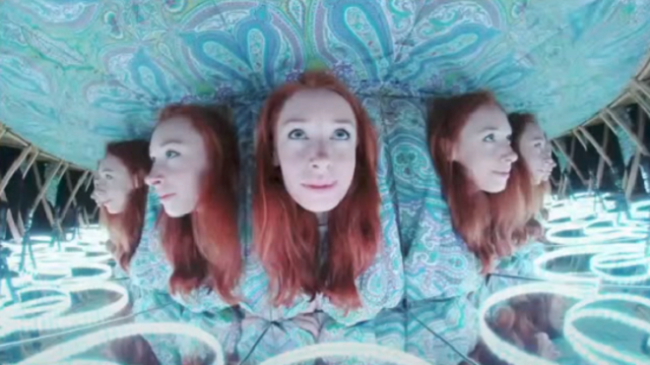
Multiple Frys
The BBC Pandemic Dataset Model
The harvested dataset enabled the BBC “Contagion” team to model a national pandemic and to claim various benefits for NPIs. This virtual reality simulation assumed a set of disease characteristics. They assumed the disease was spread through asymptomatic transmission. Prof. Fry said:
You can be infectious for a whole day without feeling ill. Meaning you can carry on about your normal everyday business without realising that you’re spreading a disease.
The team assumed a high and consistent reproduction number, or R0 value, of 1.8. This refers to the number of other people a single infected person infects. The assumption in the model was that 1 person infects 1.8 others. Thus, as more people were infected, they each spread the disease asymptomatically. The rate of growth was fixed and, assuming no one was immune, drove the simulated “contagion” unendingly.
Starting their simulation in Haslemere, assuming an R0 of 1.8 and almost instant asymptomatic transmission with no possible immunity, the BBC plugged its app data into its model.
It predicted 43M infections and assumed every one of those would result in illness—and could therefore legitimately be called a “case.” The BBC also assumed a “worst case scenario” case fatality rate (CFR) of 2% and predicted 900,000 deaths in less than nine months.
Following the “worst case scenario” predictions, Dr Adam Kucharski from the LSHTM speculated that the next pandemic would be a zoonotic virus that might break out in rural Southeast Asia. The prediction of a zoonotic virus was reinforced by Prof. Wendy Barclay from Imperial College London. Prof. Barclay also explained how mutation of spike proteins could leave us with no immunity to “new strains.”
Dr Chloe Sellwood, head of pandemic planning for NHS England, spoke about how the NHS would cope if the “worst case scenario” occurred:
So if you think about 50% of the population being affected [. . .] if all of those cases happened in one week, that’s a really big short, sharp peak. Lots of cases. If we can slow the spread over a much longer period[,] that reduces the impact on the NHS and makes it much more manageable.
Her concerns were echoed by Dr Chris Chiu, a researcher for Imperial College London, who said that pandemics were “regular occurrences.” He stated:
What we saw from the last flu pandemic in 2009, which was a relatively mild disease, was that our health service was almost unable to cope.
In truth, there was no 2009 “pandemic.” There were just 18,500 confirmed H1N1 influenza deaths globally. It didn’t even constitute a bad flu season.
During “Contagion,” Prof. Gog spoke to Prof. Fry about targeted vaccination of alleged “super spreaders.” All this chatter was based upon the assumption that infection is asymptomatic and practically instant. Prof. Fry suggested:
So if you take those out, vaccinate them so they are immune to the virus, and see how it changes.
Assuming that vaccination would stop transmission, Prof. Gog adjusted the simulation and Prof. Fry concluded that targeting just 10% of alleged super-spreaders would reduce infection rates by 40%. She added:
Our app enabled us to identify super-spreaders in Haslemere. But in the real world people who work in busy places like schools could also be super-spreaders.
Prof. Gog then simulated the impact that handwashing could have in the faux pandemic. Gog’s subsequent model produced results that suggested handwashing could save 13M lives and slow the transmission of an airborne respiratory virus.
This led Prof. Fry to conclude:
If we all commit to changing our behaviour, there are ways to slow the pandemic.
Summary of the BBC Contagion Model
A zoonotic virus emerges in Southeast Asia. It soon spreads to the UK, where the first domestic infection is identified in Haslemere. From Haslemere, as a consequence of asymptomatic transmission and a high R0, the contagion spreads around the UK, striking the major urban areas first and hardest. Super-spreaders create hotspots of infection that rapidly overwhelm health services.
No one is immune. Contagion is more or less instant, and infection and transmission are asymptomatic. Consequently, just being infected makes you a “case” of the disease, symptoms or not. The only hope is a vaccine that stops transmission of the virus. But the virus mutates into potentially more dangerous forms (variants).
Due to the high death rate, until a life-saving vaccine stops infection and transmission, the people need to follow government orders, change their behaviour and commit to using NPIs.
Measures that could be useful focus upon “slowing the spread” (flattening the curve) in order to protect the NHS. Other suggested measures could include telling people to “stay at home” (lockdown), “shutting down places where people gather” (social distancing) or closing schools and businesses. Handwashing (hands, face, space) could also flatten the curve and reduce the spread of an airborne respiratory virus.
Sound familiar?
Who Used The BBC’s Dataset and the Model
Throughout pseudopandemic, the UK government said it took its scientific advice from the Scientific Advisory Group for Emergencies—SAGE.
In 2021, Prof. Gog spoke about how the BBC Pandemic Dataset was used and by whom. She revealed that the Scientific Pandemic Influenza Group on Modelling (SPI-M), the predictive modelling team within SAGE, picked up the Dataset and was looking at her research in 2018, following the BBC’s experiment.
The World Health Organisation declared a global pandemic on the 11th of March 2020, but SPI-M had already been modelling future pandemics, using the BBC data, for more than a year. Prof. Gog also spoke about her own participation in SPI-M and SAGE that began in February 2020. She noted:
SPI-M was all about gearing up for having the modelling groups at the ready in the case of a pandemic. [. . .] With COVID-19 a lot of people are asymptomatic, and there are other diseases which look like COVID-19, so you’ve got to have testing. [. . .] [S]ome types of tests have imperfect sensitivity. So even understanding surveillance of the current situation has been surprisingly complex. [. . .] We’d guessed already at that time that closing schools would do immense harm to children, and now the evidence for that is much clearer.
SPI-M was focused on predictive models that could inform policy decisions. In February 2020, shortly after she’d joined SPI-M, Prof. Gog gave an interview to the Centre International de Rencontres Mathématiques (CRIM) in which she revealed more about how SPI-M was working during the pandemic.
Prof. Gog acknowledged the paucity of empirical data SPI-M could access. She seemed uneasy:
It might be more comfortable for us to say “we don’t have enough data, we can’t do this,” but we should try and do what we can.
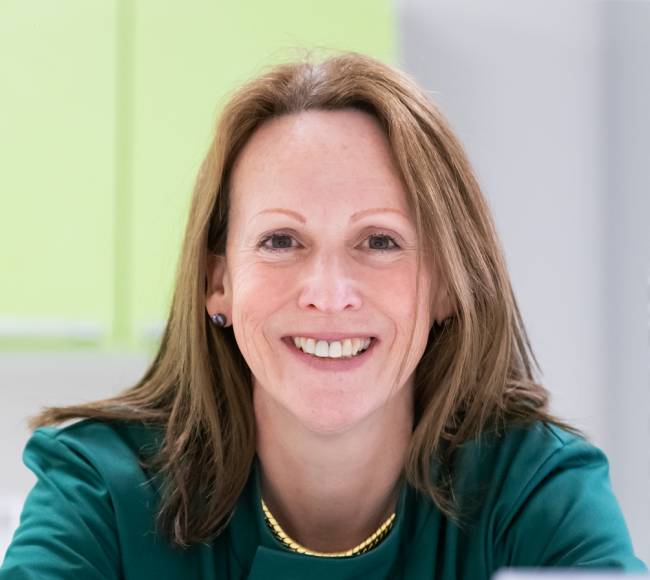
Wendy Barclay
Prof. Gog was an academic caught in a dilemma. Her expertise was in constructing models from empirical data. Once in SPI-M, however, she was asked to produce models, based upon little evidence, predicting empirical data. A very different proposition.
Given what we now know about the harm caused to children by the lockdown measures, for example, the professor’s discomfort was understandable. But it is not as if these harms were unknown. Many warned about them prior to any decision being made to shut schools.
Prof. Gog wasn’t the only scientist involved in the BBC “Contagion” experiment who later advised the government as a member of SAGE. Prof. Wendy Barclay (SAGE) and Dr Adam Kucharski (SAGE and SPI-M) joined her. Dr Chloe Sellwood became a member of the New and Emerging Respiratory Virus Threats Advisory Group (NERVTAG).
Many of the first to write papers based upon the BBC Pandemic Dataset also “advised” the UK government’s COVID-19 response. Dr Petra Klepac (SPI-M and TCF), Dr Stephen Kissler (SPI-M), Dr Joshua Firth (SPI-M) and Dr Lewis Spurgin (SPI-M) added to the group of scientists who based their advice upon the BBC Pandemic Dataset.
But what did this “advice” amount to?
In 2009, the UK government’s senior scientific advisor on the Misuse of Drugs, Prof. David Nutt, was effectively sacked by then-Labour Home Secretary Alan Johnson. Nutt was forced to resign after he delivered a briefing paper in which he said that the scientific evidence showed that LSD, ecstasy and cannabis were less harmful than tobacco and alcohol.
Nutt’s crime was not that he was wrong but that he had questioned the government. His scientific advice had damaged the government’s policy decision to “give the public clear messages about the dangers of drugs.” It didn’t matter to the government that its advice and prohibition polices were causing harm to public health. It mattered only that its pet scientist had undermined its authority.
As pointed out by Prof. Andrew Maynard:
Perhaps Nutt’s greatest crime is that he sincerely – and altruistically[,] I believe – tried to speak truth to power. He attempted to provide decision-makers with a sound scientific and evidence-based foundation on which to base policies that would improve people’s lives. [. . .] His downfall was that he was working with a government that seems to believe in speaking power to truth rather than truth to power – deciding what is right first, then bolstering this up with evidence!
Hypothesis
In 2018, using data they started gathering in 2017, the BBC modelled the future UK pseudopandemic in minute detail, right down to where it allegedly began.
Many will argue that this is to be expected: the scientists knew what they were doing and their predictions turned out to be accurate. That is possible, though the Haslemere coincidence stretches plausibility beyond breaking point.
There is another major problem with that argument. The BBC “Contagion” team did not predict a “real pandemic.” They modelled a fake pandemic based upon epidemiological assumptions that do not match the subsequent empirical data observed during the COVID-19 disease outbreak.
Asymptomatic transmission, no possible immunity, a persistently high R0, all infections leading to “cases,” high disease mortality and near-instant infection and transmission were not features of COVID-19 epidemiology. COVID-19 (symptomatic illness) did not spread through populations like wildfire. Only a few were affected; most were not.
So, if the dynamics of COVID-19 were completely different from those assumed in the “Contagion” model, how is it possible that the supposed COVID-19 “pandemic” appears to have been practically identical to the fake one made up by the BBC in 2018? Right down to where it began.
The BBC’s model mirrored the pseudopandemic because the MSM and the government portrayed “the COVID-19 pandemic” as described by the model, not by the empirical data. There may well have been a novel respiratory disease making the rounds. Some will say even this isn’t true, but given all we know now, it is evident that the “pandemic” narrative we were told to unquestioningly accept is the fictional one broadcast by the BBC in 2018.
To further substantiate this hypothesis, consider this: The NPIs that were foisted upon us all had no epidemiological basis. There was no aspect of the COVID-19 disease that warranted any of the NPIs that were deployed. Again, the use of NPIs was only suggested by the models—most specifically by the BBC’s “Contagion” model and later by Imperial College’s Report 9, which was yet another “model.”
Earlier we asked who the scientists were who were “pushing” the science that ran contrary to all known epidemiology. We’ve just listed some of the many scientists involved with the BBC “Contagion” experiment who worked with the BBC Pandemic Dataset and were “selected” by the government to allegedly provide it with “advice.”
They weren’t chosen simply because they were leading scientists. They were chosen because they were already working on scientific research that the government could exploit to justify policy decisions it had already taken.
NPIs were the objective, not the response. COVID-19 was the excuse, not the cause.
Government policies caused the turmoil and misery that the vast majority perceived to be a pandemic. Government policies increased the mortality risks for the most vulnerable and perpetuated the myth of a rampant disease. The government turned a relatively minor disease outbreak into a “catastrophe.”
The government “invested” in the BBC’s “Contagion” experiment and then used the subsequent “science” to simulate a national pandemic. It was a pseudopandemic designed with the complicity of the BBC, which then acted as one of the government’s leading propagandists, selling the model it created to a terrified public.
Conclusion
There is no criticism of the principle of vaccination made in this series of articles. To question the COVID jabs is not to question vaccination as a potentially useful public health strategy. There may be questions to be asked about vaccine schedules, but they are not asked here.
The BBC’s “Unvaccinated with Professor Hannah Fry” was a disgraceful piece of propagandist junk. The BBC set out to deceive its audience and promote government policy, and that is all that its programme achieved.
The whole premise of the so-called debate, that the majority of the population need to take the jabs but that some refuse to do so, was a lie. The vast majority of those who chose not to take the jab didn’t need one in the first place. Unfortunately, the injected were predominantly coerced. Coercion was the basis of the so-called vaccine’s widespread adoption.
The programme presented by Prof. Fry was scientifically illiterate. It denied the scientific principle of doubt and omitted all evidence that undermined its propagandist message. There was no debate, no “exploration” and no value in it for anyone except the pharmaceutical corporations and the government.
The BBC had no right to deceive the public by claiming that Prof. Fry “helped bring the UK out of its first lockdown.” Nothing could be further from the truth.
It is truly amazing that the UK public continues to pay for propaganda through the BBC license fee. The people face a crushing cost-of-living crisis that, despite attempts to blame everything on the Ukraine conflict, began long before the 2020 pseudopandemic.
That cost-of-living crisis was exacerbated by another NPI, as the government printed money like confetti to fund an unemployed populace—a populace locked up and isolated in their homes.
The majority have already sacrificed many of their freedoms on the altar of the “new normal.” When the heating is rationed this winter, we might wonder what else people will forego to afford to watch their tell-lie-vision.
